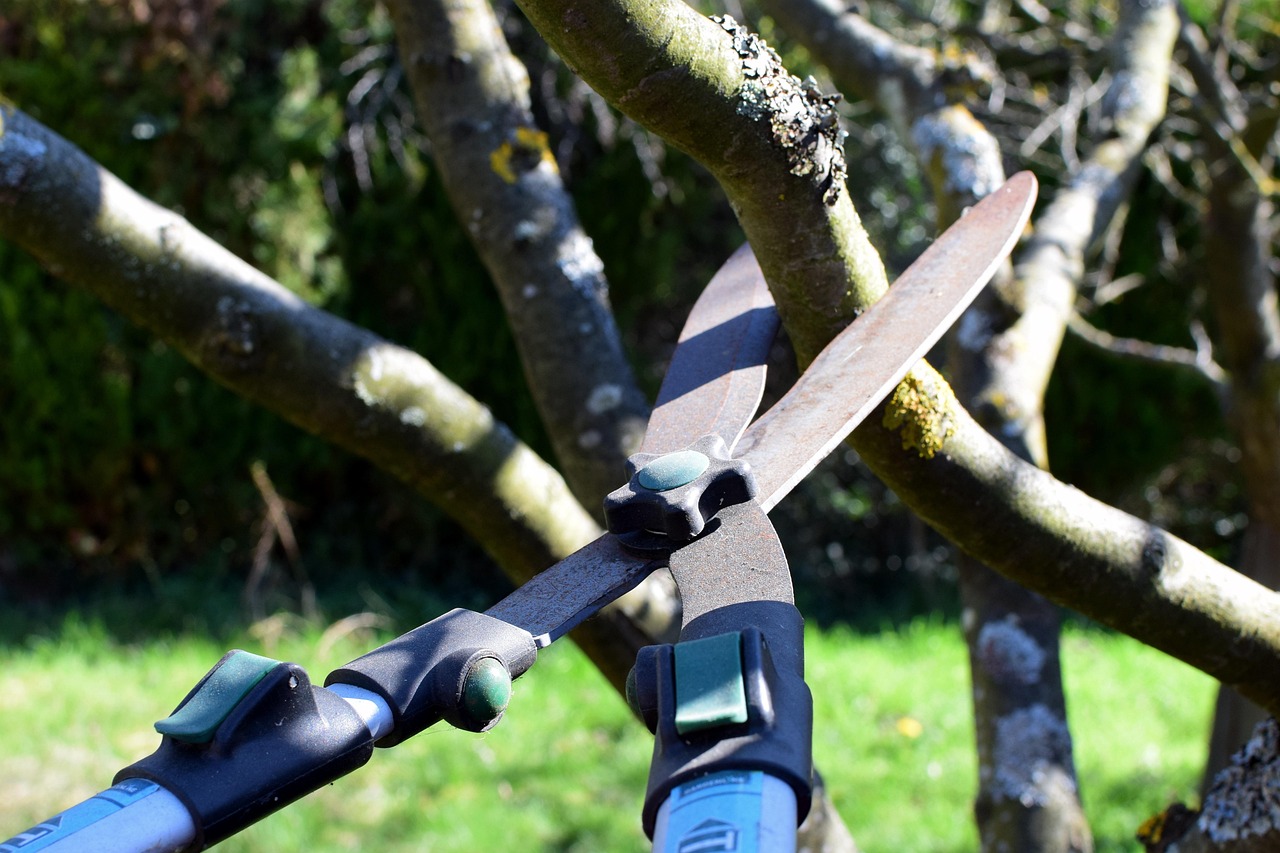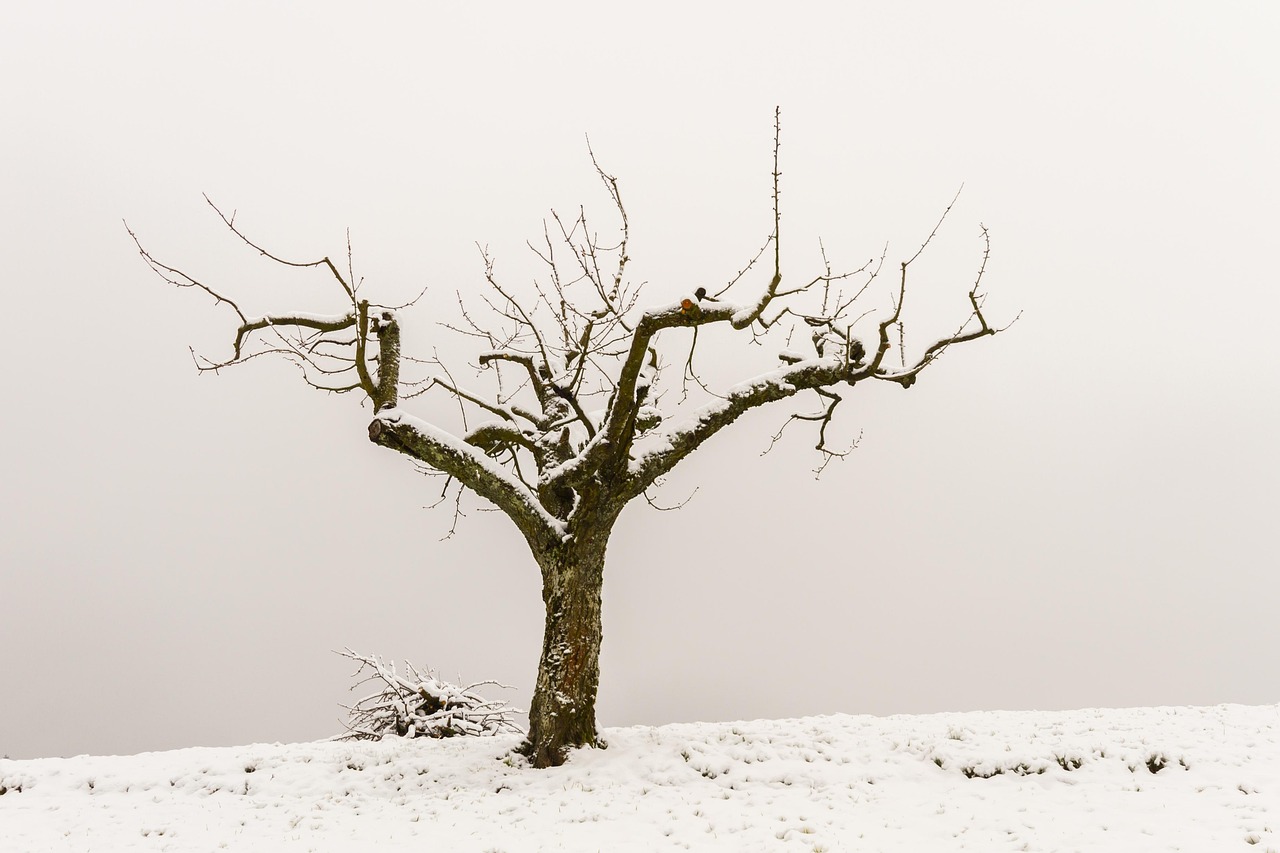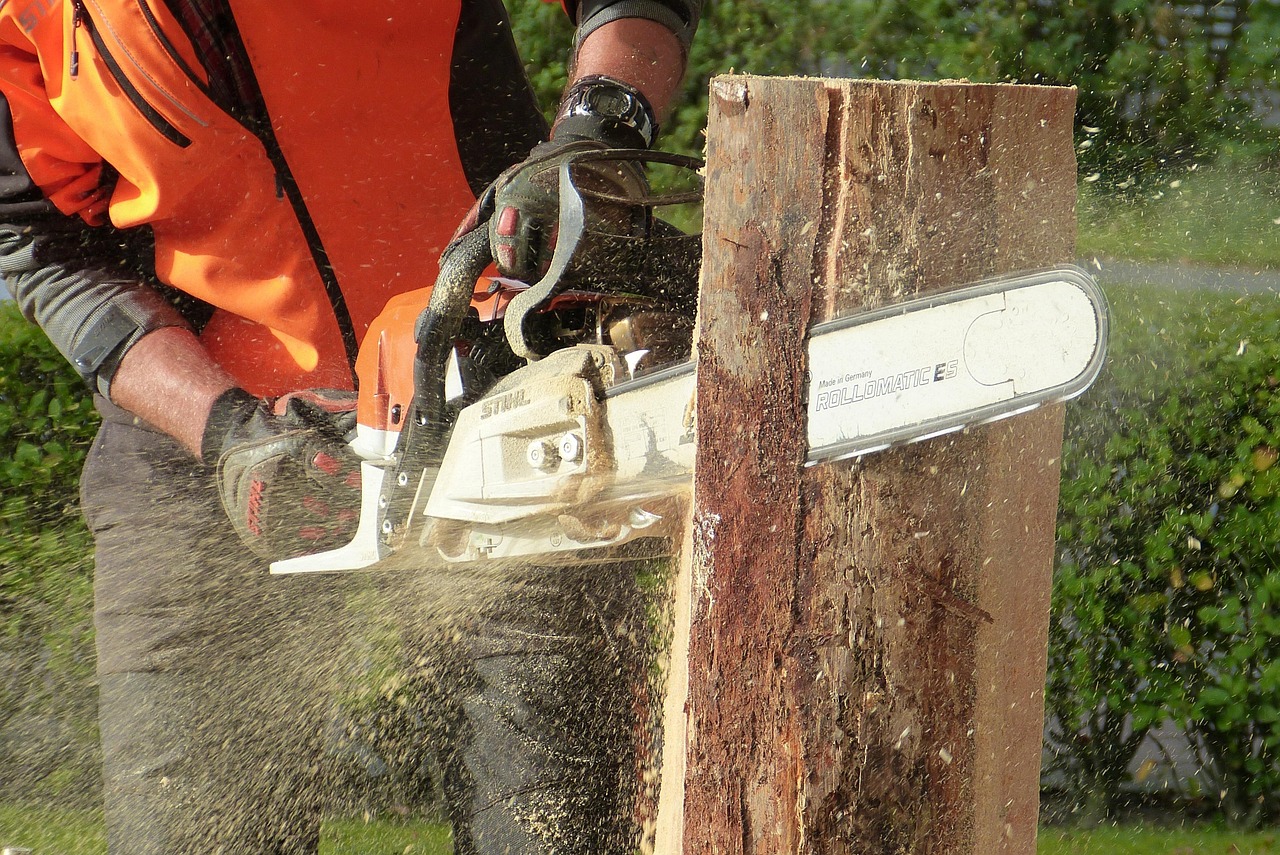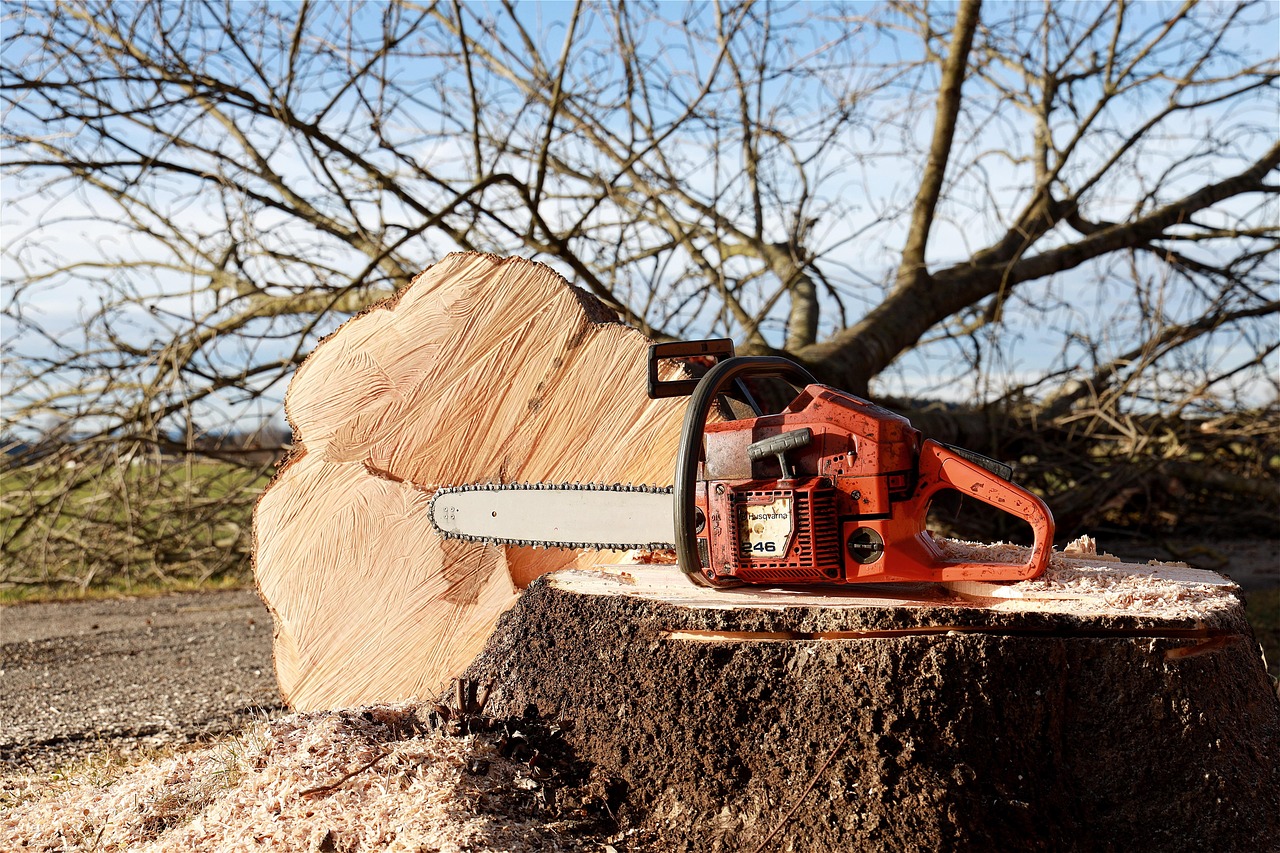Tree pruning on steep hillsides and difficult terrain requires careful planning and safety measures. Use appropriate tools such as hand pruners, pole saws, or chainsaws, ensuring they are well-maintained. Consider using harnesses or ropes for stability, and always prune during dry conditions to avoid slips. Prioritize pruning techniques that minimize risk while maintaining tree health and structure.
Tree pruning on steep hillsides and difficult terrain requires careful planning and execution to ensure safety and effectiveness. Proper techniques, tools, and timing are essential for managing tree health and stability in such challenging environments.
Tree pruning is a vital practice for maintaining the health and aesthetics of trees, especially in landscapes that involve steep hillsides and difficult terrain. This type of pruning is not only about enhancing the appearance of trees but also about promoting their growth, preventing disease, and ensuring safety in areas where falling branches can pose hazards. As tree care professionals and homeowners take on this task, understanding the specific challenges presented by steep or uneven ground is crucial.

Steep hillsides often present unique challenges for tree pruning due to the risk of slips, falls, and equipment mishaps. Additionally, the natural shape and growth patterns of trees in these areas may differ significantly from those in flat landscapes. This necessitates specialized techniques and tools that accommodate the unique environmental factors at play. Factors such as soil stability, drainage, and exposure to wind must also be considered when planning a pruning strategy.
Understanding the Challenges
The challenges of pruning trees on steep hillsides can be significant. These challenges can include:
- Safety Risks: The steepness of the terrain increases the risk of falls or accidents while using ladders or pruning equipment.
- Access Issues: Difficult terrain may limit access to certain areas, making it hard to reach trees that need pruning.
- Soil Erosion: Pruning can disturb the soil, leading to potential erosion if not managed properly.
- Tree Stability: Trees on slopes are often more susceptible to wind damage or uprooting if not pruned correctly.
Due to these challenges, it is essential to adhere to best practices for safety and effectiveness when pruning in these environments. Proper preparation and knowledge can make the difference between success and potential hazards.

Before starting any pruning work, it is advisable to assess the site carefully. This includes evaluating the slope’s steepness, identifying any potential hazards, and determining the best access points for equipment and personnel. Additionally, it is important to consider the types of trees being pruned, as different species may require different approaches.
Essential Tools for Pruning on Steep Hillsides
Using the right tools can significantly enhance safety and efficiency during tree pruning on steep hillsides. Some of the essential tools include:
- Hand Pruners: Ideal for small branches and fine-tuning cuts.
- Loppers: Useful for larger branches that hand pruners cannot handle.
- Saws: A small chainsaw or pole saw may be necessary for larger limbs.
- Safety Gear: Helmets, gloves, and harnesses are critical for protecting against falls and injuries.
- Rope and Harness Systems: For steep slopes, these systems can help stabilize workers and equipment.
Choosing quality tools that are suitable for steep terrain is important. Tools should be lightweight yet durable enough to handle tough branches. Using ergonomic designs can also reduce fatigue during extended work hours.

Timing and Techniques
The timing of tree pruning is equally important as the tools used. Pruning during the dormant season, typically late winter or early spring, allows trees to heal before their active growth period begins. However, specific species may have unique timing considerations based on flowering cycles or growth habits.
When it comes to techniques, there are several methods that can be effective when pruning trees on steep terrain:
- Thinning: Removing specific branches to reduce density improves air circulation and light penetration.
- Crown Raising: Removing lower branches encourages upward growth while enhancing visibility.
- Crown Reduction: Reducing the overall height or spread of a tree can help with stability on slopes.
Each technique serves a purpose depending on the tree’s health needs and the specific environmental conditions of the hillside. Careful consideration should be given to how much foliage is removed to avoid stress on the tree.

In conclusion, successful tree pruning on steep hillsides requires a combination of proper planning, suitable tools, and effective techniques. By understanding these elements, individuals can ensure safer and more effective pruning practices that enhance tree health and stability.
Safety Considerations in Tree Pruning
Safety is a paramount concern when pruning trees on steep hillsides and difficult terrain. The risks associated with working on inclines can be significant, and proper precautions must be taken to protect both the worker and the surrounding environment. Understanding these safety considerations can help prevent accidents and ensure a successful pruning experience.
Personal Protective Equipment (PPE)
Wearing the appropriate personal protective equipment is crucial for anyone engaged in tree pruning. The following items are recommended:
- Helmet: Protects the head from falling branches and debris.
- Eye Protection: Safety goggles or glasses shield the eyes from flying particles.
- Gloves: Sturdy gloves provide grip and protect hands from cuts and scrapes.
- Footwear: Non-slip, sturdy boots with ankle support are vital for maintaining stability on uneven ground.
- Hearing Protection: Earplugs or earmuffs can be necessary when using power tools.
Using the right PPE reduces the risk of injury significantly. It is important to ensure that all equipment is well-maintained and suitable for the task at hand.
Proper Use of Tools
Using tools correctly is essential for safety and efficiency. Here are some guidelines:
- Inspect Tools: Always check tools for damage before use. Ensure they are sharp and in proper working condition.
- Use Tools as Intended: Follow manufacturer instructions for each tool to avoid misuse.
- Maintain a Safe Distance: When using saws or other power tools, keep a safe distance from others to avoid accidents.
- Avoid Overreaching: Use ladders or climbing gear appropriately. Do not stretch beyond your reach while using tools.
Adhering to these practices can help minimize injuries while enhancing the efficiency of the pruning process.
Techniques for Navigating Difficult Terrain
Navigating steep hillsides requires specific techniques to maintain stability and safety. Here are some effective methods to consider:
Footing Techniques
Proper footing is essential when working on slopes. Here are some techniques to enhance stability:
- Three-Point Contact: Always maintain three points of contact with the ground when climbing or descending slopes with tools.
- Foot Placement: Place feet firmly on stable ground. Avoid loose soil or rocks that can shift under weight.
- Controlled Movements: Move slowly and deliberately to maintain balance, especially when carrying tools or branches.
Using Ropes and Harnesses
The use of ropes and harnesses can provide additional safety when working on steep slopes. Consider these tips:
- Anchor Points: Identify secure anchor points before beginning work. Ensure they can support your weight if a fall occurs.
- Climbing Gear: Use climbing gear such as harnesses and carabiners to secure yourself while pruning from heights.
- Partner System: Work with a partner who can help manage ropes and provide assistance when needed.
This equipment not only enhances safety but also allows for more effective pruning in difficult-to-reach areas.
Environmental Considerations
When pruning on steep hillsides, it is essential to consider the environmental impact of your actions. Trees play a crucial role in preventing soil erosion and maintaining ecosystem health. Here are some factors to keep in mind:
Erosion Prevention
The removal of branches and foliage can disturb soil stability, especially on steep slopes. To mitigate erosion:
- Avoid Heavy Pruning: Limit the amount of foliage removed to maintain tree health and soil integrity.
- Create Buffer Zones: Leave natural vegetation around tree bases to stabilize soil and prevent runoff.
- Mulching: Apply mulch around tree bases to retain moisture and reduce erosion potential.
Wildlife Considerations
Trees often provide habitat for various wildlife species. Before pruning, consider the following:
- Nesting Seasons: Be aware of local wildlife nesting seasons and avoid pruning during these times to prevent disturbing birds and other animals.
- Habitat Preservation: Aim to preserve as much natural habitat as possible while still achieving the desired tree health outcomes.
This awareness promotes ecological balance while allowing for necessary tree maintenance.
Adequate Training and Education
To effectively manage tree pruning on steep hillsides, adequate training is essential. Whether you are a professional arborist or a homeowner, consider the following educational opportunities:
- Certification Programs: Many organizations offer certification programs in arboriculture that include safety training and proper pruning techniques.
- Workshops and Seminars: Participate in local workshops that focus on tree care in challenging environments.
- Online Resources: Utilize online courses and videos that demonstrate safe tree pruning practices.
Investing in education not only enhances skills but also promotes safer practices in challenging terrains.
Assessing Trees for Pruning
Before beginning the pruning process on steep hillsides, it is essential to assess the trees to determine which branches require attention. An accurate assessment can help prioritize tasks and ensure that only necessary pruning is performed. This section will outline how to evaluate tree conditions effectively.
Identifying Healthy vs. Unhealthy Branches
Understanding the difference between healthy and unhealthy branches is critical. Here are some key indicators to look for:
- Color: Healthy branches usually exhibit vibrant colors, while unhealthy ones may appear dull or discolored.
- Texture: Check for rough or peeling bark, which could signal disease. Healthy branches should have smooth and intact bark.
- Growth Patterns: Look for signs of stunted growth. Unhealthy branches often have fewer leaves or abnormal growth patterns.
- Dead or Dying Branches: Identify branches that are completely dead, brittle, or devoid of foliage. These should be prioritized for removal.
By evaluating these indicators, you can make informed decisions on which branches need pruning to improve the overall health of the tree.
Evaluating Structural Integrity
In addition to assessing branch health, evaluating the structural integrity of the tree is vital. A tree with weak structures may be more prone to failure, especially in steep terrains. Consider the following factors:
- Crown Shape: A balanced crown shape is essential for stability. Uneven weight distribution can lead to leaning or breakage.
- Branch Angles: Evaluate the angles at which branches grow. Ideally, they should have a wide angle with the trunk to support weight effectively.
- Root Health: Examine the base of the tree for signs of root rot or instability. Healthy roots are vital for overall tree strength.
An assessment of structural integrity will help determine whether a tree can withstand any pruning efforts without posing safety risks.
Pruning Techniques for Different Tree Types
Different types of trees may require specific pruning techniques to ensure optimal health and growth. Understanding these variations can help you apply the appropriate methods during pruning sessions.
Deciduous Trees
Deciduous trees, which lose their leaves in the fall, benefit from specific pruning practices:
- Timing: The best time to prune deciduous trees is during their dormant season, typically late winter or early spring.
- Technique: Focus on thinning overcrowded areas to enhance air circulation and light penetration.
- Removal of Suckers: Regularly remove suckers that grow from the base or roots to direct energy into healthier branches.
Evergreen Trees
Evergreen trees retain their foliage year-round and require different considerations:
- Timing: Late spring after new growth has emerged is typically the best time to prune evergreens.
- Technique: Avoid heavy pruning; instead, lightly shear or trim to maintain shape without removing large sections of foliage.
- Avoiding Brown Tips: Ensure that cuts are made above healthy green foliage to prevent brown tips from developing.
Fruit Trees
Pruning fruit trees plays a critical role in fruit production and tree health:
- Timing: Prune fruit trees during dormancy but avoid late winter when buds begin to swell.
- Technique: Use thinning cuts to remove branches that cross over one another, allowing more light and air into the center of the tree.
- Sustaining Shape: Maintain a central leader structure for optimal growth and fruit production.
Post-Pruning Care and Maintenance
After completing pruning tasks on steep hillsides, proper care and maintenance are crucial for supporting tree recovery and growth. This section outlines some essential post-pruning practices.
Watering and Fertilization
Providing adequate water and nutrients after pruning helps trees recover effectively:
- Watering: Ensure that trees receive sufficient water, particularly in dry periods. Deep watering encourages root establishment.
- Fertilization: Use a balanced fertilizer if necessary, especially if the soil lacks nutrients. Be cautious not to over-fertilize, as this can stress the trees.
Pest and Disease Monitoring
Pests and diseases can exploit weakened trees after pruning. Monitor carefully for any signs of infestation:
- Pest Inspection: Regularly check for pests such as aphids or borers that may target stressed trees.
- Disease Symptoms: Look for signs of fungal infections or unusual discoloration on leaves and bark.
Treat any issues promptly to maintain tree health and vitality after pruning activities.
Mulching and Soil Care
A layer of mulch can provide numerous benefits to pruned trees:
- Erosion Control: Mulch helps protect soil from erosion on steep slopes and retains moisture.
- Nutrient Addition: Organic mulch breaks down over time, adding nutrients back into the soil around the tree’s root zone.
- Pest Prevention: A thick layer of mulch can deter some pests while promoting beneficial organisms in the soil.
The combination of these practices will support ongoing tree health and stability following pruning on steep hillsides and difficult terrain.
Additional Resources for Tree Pruning
For those interested in learning more about tree pruning, especially on steep hillsides and difficult terrain, several resources can enhance knowledge and skills. These resources are valuable for both beginners and seasoned professionals.
Books and Publications
There are numerous books available that cover various aspects of tree pruning and care:
- The Pruning Book: This book provides comprehensive guidance on pruning techniques for various tree species.
- Dirr’s Trees and Shrubs for Warm Climates: A great resource focusing on the selection and care of trees in different environments.
- Arboriculture: Integrated Management of Landscape Trees, Shrubs, and Vines: This text covers detailed practices in arboriculture, including pruning methods.
Online Forums and Communities
Engaging with online communities can provide practical insights and peer support:
- TreeBuzz: A forum for tree care professionals to discuss techniques, challenges, and share experiences.
- ArboristSite: An online community where arborists can exchange tips, ask questions, and share their work.
- Facebook Groups: Various groups dedicated to tree care and gardening allow members to share advice and resources.
Local Extension Services
Universities and local governments often provide extension services that offer educational workshops and resources. These services can connect individuals with experts in arboriculture:
- Workshops: Many extension programs run workshops on tree care and maintenance, including pruning techniques.
- Plant Clinics: These clinics provide on-site advice and assessments from knowledgeable staff.
Understanding Local Regulations
Before embarking on any major tree pruning or removal project, it is essential to be aware of local regulations. Many municipalities have specific laws regarding tree care, especially in urban settings or near protected areas. Here are some key points to consider:
- Permits: Some areas may require permits for significant tree pruning or removal. Always check with local authorities.
- Protected Species: Be aware of any local ordinances that protect certain tree species or habitats. Pruning protected trees may require special permits or guidelines.
- Easements: Understand any easements on your property that may impact your ability to prune trees located near property lines.
By staying informed about local regulations, you can avoid potential fines or legal issues while ensuring responsible tree management.
Final Thoughts
Tree pruning on steep hillsides and difficult terrain presents unique challenges that require careful planning, knowledge, and execution. Understanding the specific needs of different tree species and employing the correct techniques can enhance both the health of the trees and the safety of the individuals performing the work. Personal protective equipment, proper tools, and adherence to safety measures are essential components of successful tree maintenance in these environments.
A thorough assessment of tree health, structural integrity, and environmental considerations will lead to better decision-making during the pruning process. Post-pruning care, including adequate watering, fertilization, pest monitoring, and mulching, further supports tree recovery and vitality. By leveraging available resources, engaging with communities, and understanding local regulations, individuals can enhance their skills in tree care while promoting ecological balance.
Ultimately, responsible tree pruning not only fosters healthy landscapes but also contributes to the overall beauty and stability of challenging terrains. With the right approach and continuous education, anyone can successfully manage tree pruning efforts in steep hillside environments.
